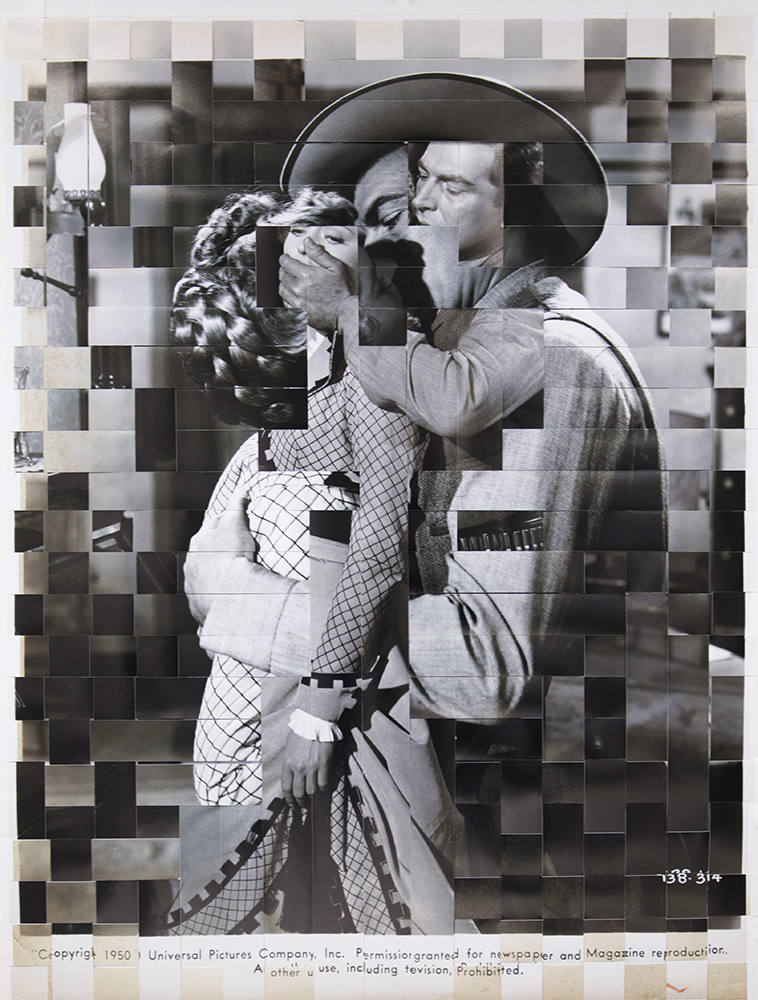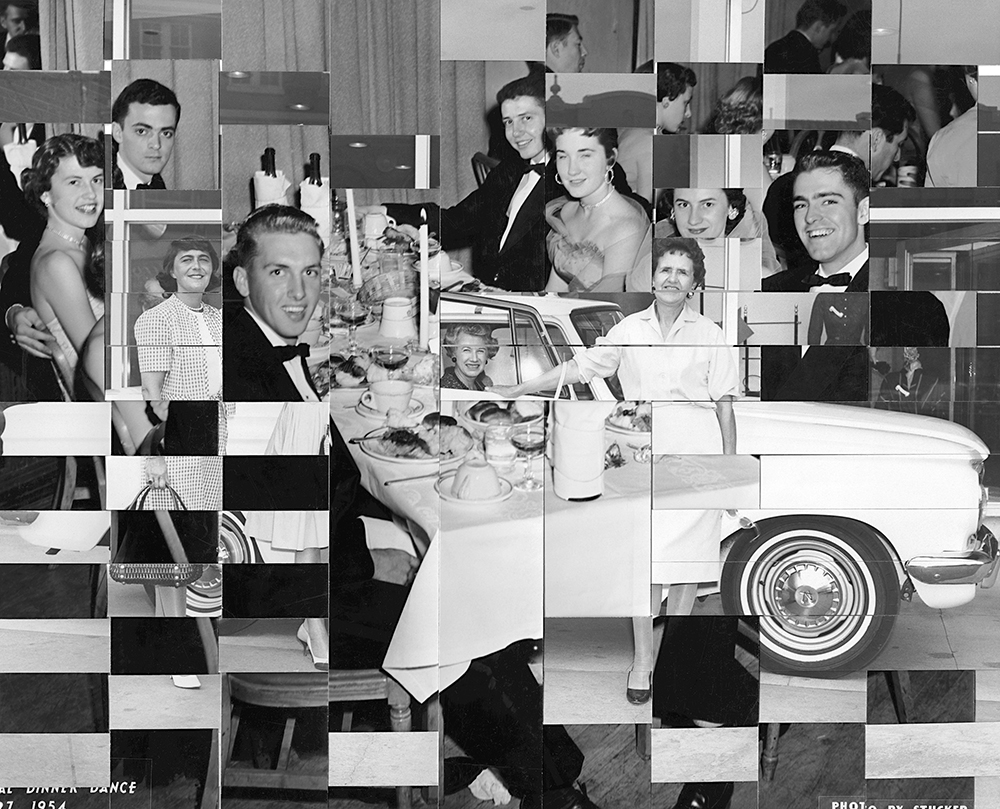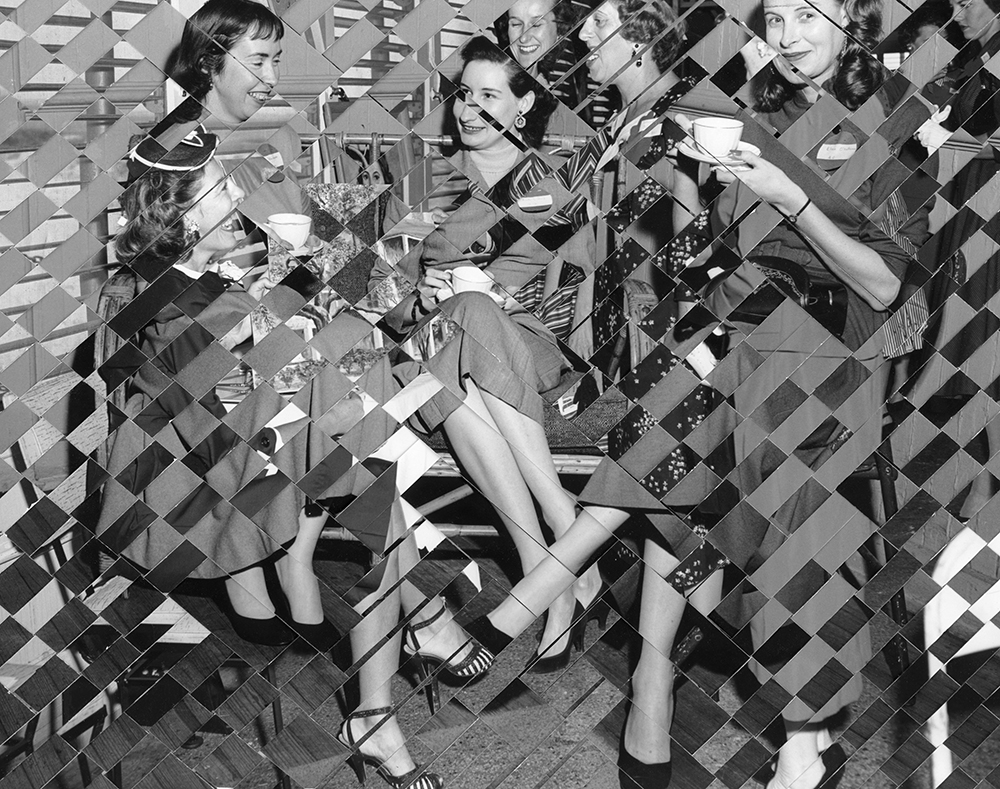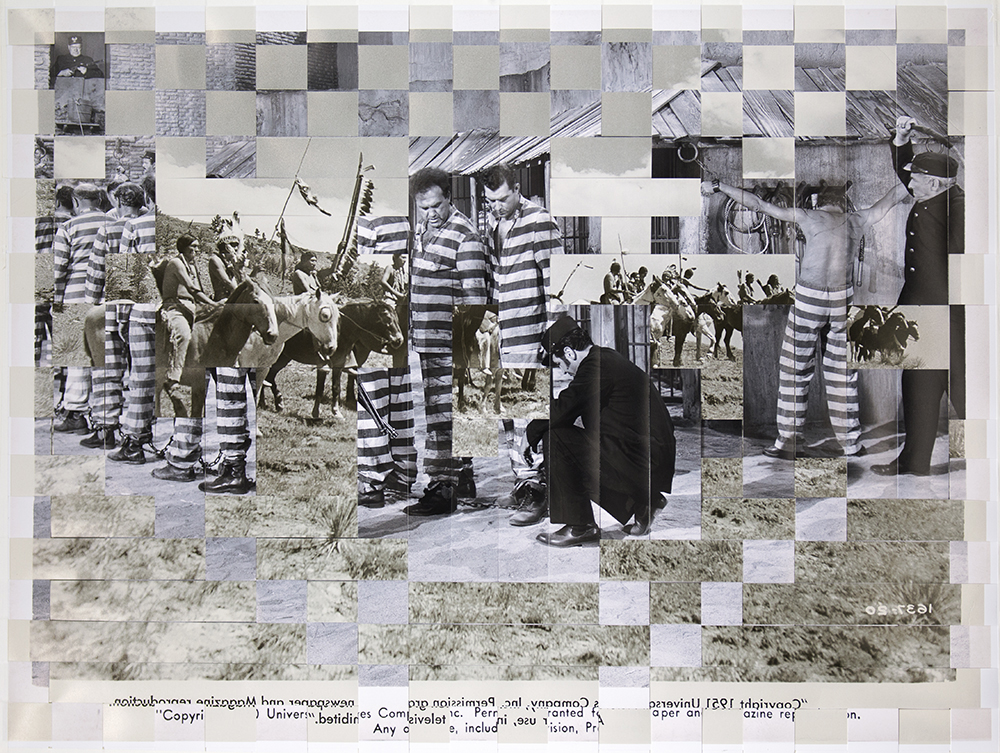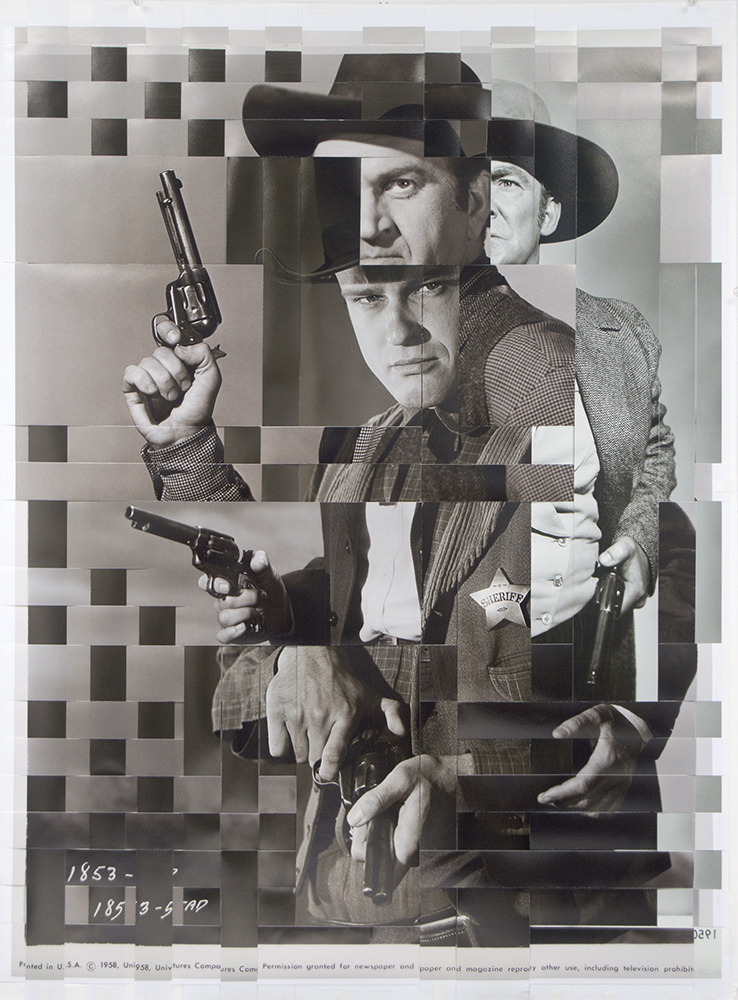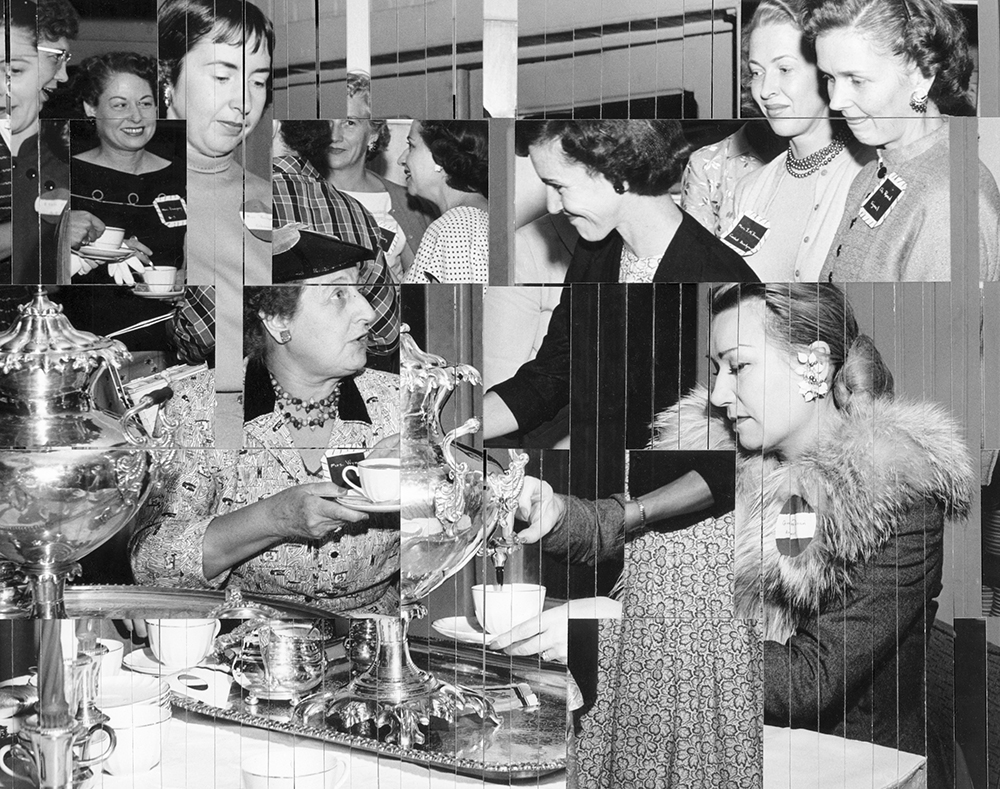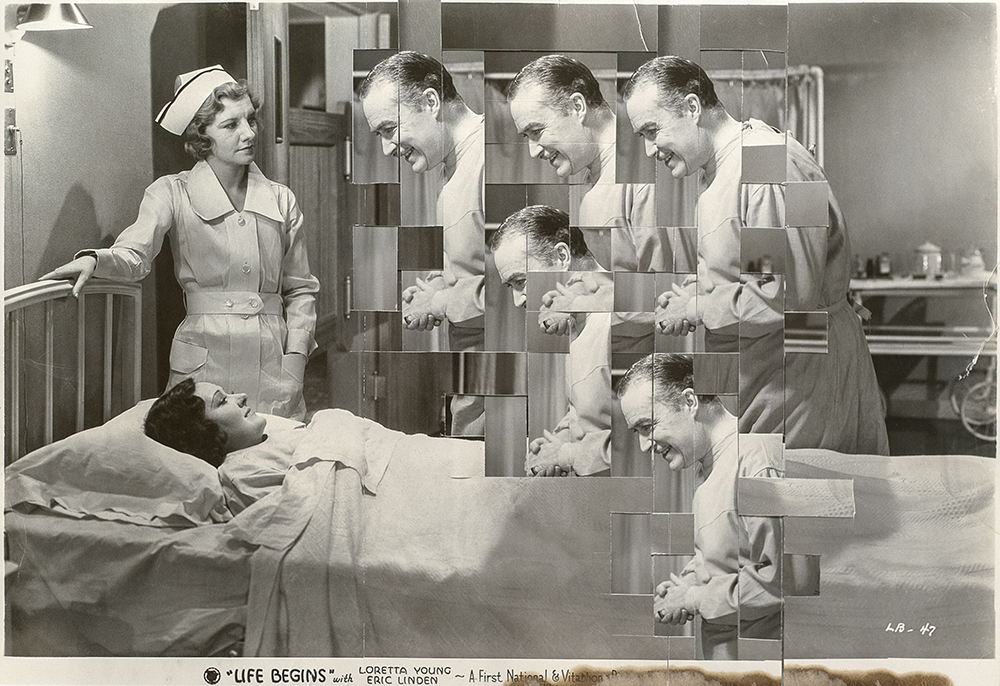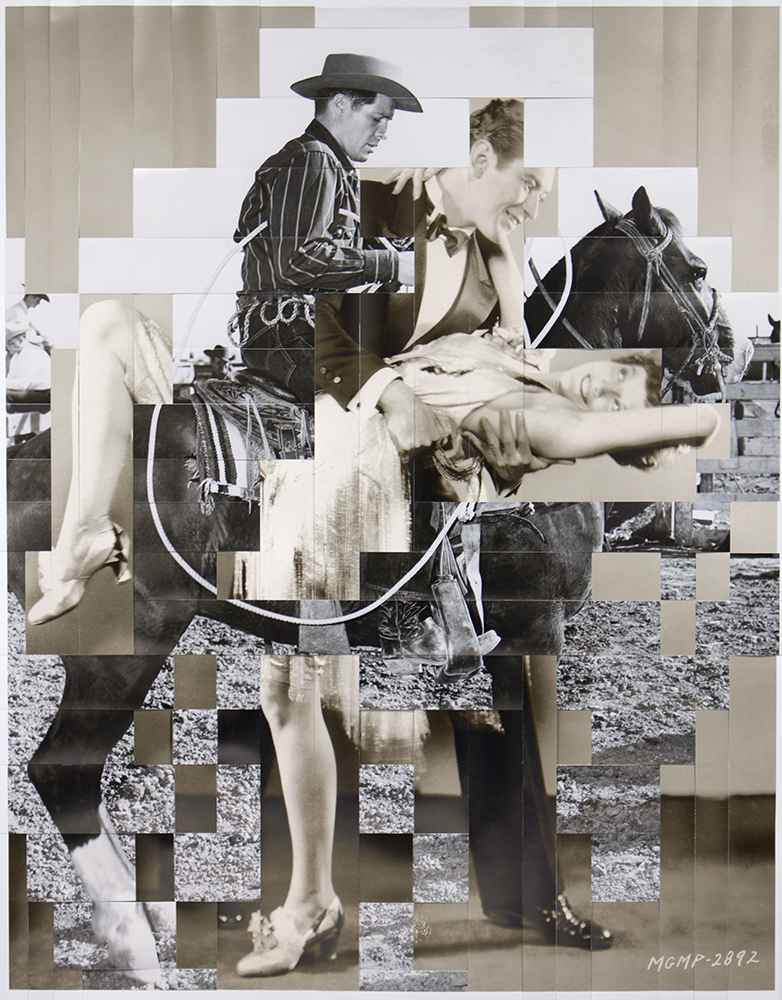By Hamidah Glasgow | June 28, 2018
Q&A: Heather Oelklaus
Heather Oelklaus (b. 1972, USA) studied Sculpture at The Kansas City Art Institute (KCAI) in the early 90’s. She has exhibited work in solo and group shows in Colorado, New Orleans, Oregon, New York, Texas, and Arizona. She has an upcoming solo show in Ft. Collins, CO at The Center for Fine Art Photography in August 2018. She will have work in a group exhibition “Light and Metal: unique prints and photo objects” at photo-eye Gallery in Santa Fe, NM. Heather currently lives and works in Colorado Springs where she explores unconventional photography and art making.
In the series O.P.P. (Other People’s Photography), hand-woven silver gelatin and inkjet prints survey stereotypical and nostalgic notions. Found photographs from US Army wives’ gatherings and Hollywood film stills are woven together to reconstruct new narratives. The simple act of dismantling these midcentury stereotypes to reconstruct them in a distorted manner is the driving inspiration for this series. The expressive gaze within these staged photographs breaks through the picture’s surface as if to confront the viewer. These sophisticated slices of history illustrate an era of inclusion and exclusion while leaving the viewer to compare present-day relationships. Started in 2014, this ongoing series continues to evolve as the political and social environment changes.
HG: You’ve created this series as a reaction to the current political climate, can you tell me more about that?
HO: The smaller pieces of the ladies were created in 2014, and the larger, 30” x 40” woven pieces are a continuation, and an ongoing body of work started in 2017. Still images from the movie sets of 1950’s Westerns were my starting point. As I thumbed through the stack of over 200 8x10 glossy’s I noticed many repeating themes and proceeded to try to weave ideas together…literally. It seemed like every time I finished a piece a new, more outrageous event would happen in the news. Inspired to make work surrounding DAPL, #metoo, women’s rights, and healthcare issues helped me feel less helpless as an artist.
HG: What was in the past deemed acceptable is no longer, and these weavings show that problematic history. Some people use the term politically correct, but in reality, it is a heightened sensitivity to being respectful of all walks of life and a move toward equity. Would you agree?
HO: Yes I agree, and I am faced with that sensitivity every time I talk about this work. The piece “In Line” is a perfect example of this awareness. When I look at past interviews, and I see that I said “Indians” when referring to the weaving of the line of criminals with the line of people on horseback. Now I would say “Indigenous.” When trying to bring awareness, I need to make sure that I am not part of the problem. My husband is River Crow, and I may be more sensitive to this than others, but that may be what is needed.
HG: We talked about how women’s issues are men’s issues. We not only need women to understand a new way in society but also men need to understand a new way to be in society. We teach women how not to get raped yet we should be teaching men not to rape. It’s complicated but essential. How do these image address this issue?
HO: I created the piece ”Pistol Pack” while thinking of these issues. I wondered what icons I would have been attracted to if I were a growing boy in the 70’s and earlier. Would I even have had an option as to what I was drawn to as a reference to manhood? Hollywood seems to have the market cornered on gender role models. I wove together five images of a movie set Cowboys with their guns. I was thinking about the gun as a powerful symbol of idealistic maleness, foregoing the obvious phallic reference, I focus on the destructive nature of the prop. Control and responsibility, these two words dance in my head as I look at this work.
Statues
The Look
Hg: Tell me about some of the other images that have white women in hats and dresses. Particularly, Statues and The Look?
HO: These smaller woven pieces from 2014 are so special to me. They represent a time when I took a big jump in my art making. Using appropriated imagery AND cutting them up without making copies first was a step off the photographic ledge. I was taught to have a certain level of respect for the photographic surface. Cutting the prints up forced me to reevaluate my definition of what photography meant to me. It was very freeing.
In “Statues” I had two glossy 8x10’s from what I can only imagine was a woman’s rotary club for military wives at some gathering with some sort of Grecian goddess theme. The only clue I had was an Army stamp on the back referring to copyright. In the center is a statue, which gave me the title, but I also started viewing these women as objects, standing as still as a statue for this posed picture that the Army was going to use for God knows what.
With “The Look” the required uniform…hats, gloves, and pattern dress was my inspiration. Once I started weaving them together, I noticed the gazes going from one woman to the next as if they were sharing some secret. I like to think about what they were hiding behind that domesticated uniform.
HG: what do you hope viewers will come away with from experiencing your work?
HO: That is such an important question. I feel like I make my work for me so when someone has a response, it always surprises me. I would like viewers to question why I did what I did, why did I choose to hide part of the photo and expose another section. The more questions they have for themselves can mean the more answers they will find for themselves.
HG: Thank you Heather!
All images © Heather Oelklaus


